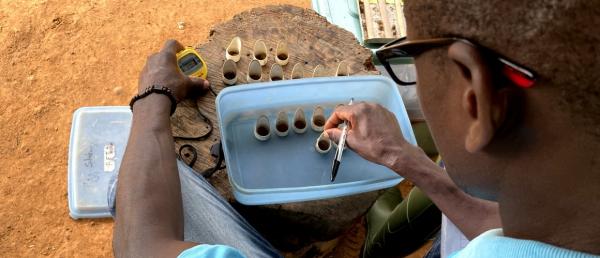Results & impact 23 April 2024
- Home
- CIRAD news
- News
- Avoiding epidemics: food and agricultural practices
Avoiding epidemics through changes to food and agricultural practices
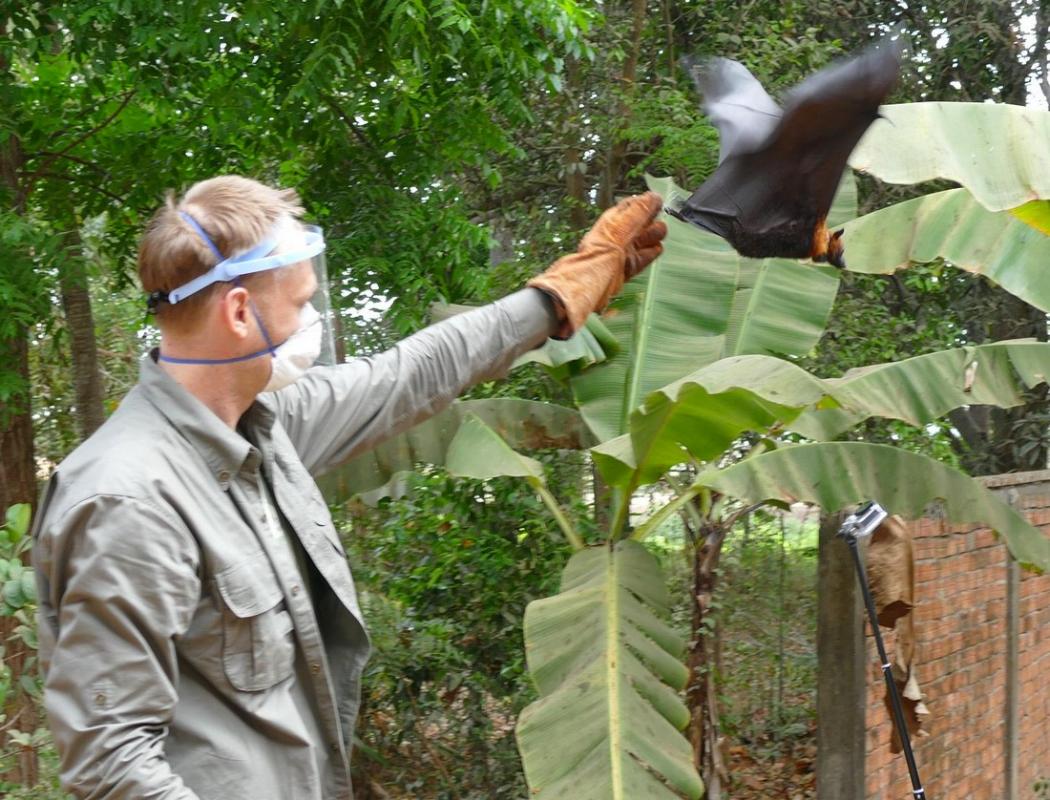
Julien Cappelle releases a bat fitted with a GPS collar to track its movements and better understand its feeding habits © N. Furey, FFI
Ebola, Nipah, Marburg and coronaviruses… numerous viruses are spread by bats. Although the risk of transmission to humans is low, the consequences can be very serious, as shown by the ongoing health crisis. If Nipah virus infection were to cause a pandemic, the outcome would be catastrophic given the fatality rate of this disease, which is between 40 and 75%. Bangladesh suffers Nipah outbreaks almost annually. Why is this country the worst hit, when the virus seems to circulate in all bat populations in Southeast Asia? Scientists from CIRAD and the Institut Pasteur have conducted studies in Cambodia*. Mobilizing ecology, anthropology, virology and epidemiology, they have shown that the emergence of epidemics is strongly linked to human food and agricultural practices.
Nipah is present in Cambodia
The scientists tracked the virus in bat and human populations in Cambodia. As they expected, Nipah was indeed found in some of the 3000 bats tested**. At the same time, serological tests were conducted on 418 people who have contact with these animals (hunters, palm juice collectors and vendors). The result was that none of them had ever been exposed to Nipah virus. According to Julien Cappelle, a veterinarian at CIRAD, “these results indicate that the risk of transmission lies not so much in the bats as in human practices ”.
Practices central to the emergence of epidemics
Bangladeshis are fond of date palm sap, a drink traditionally collected in large jars with wide necks. Bats drink this nectar, and in doing so can contaminate it with their saliva or urine. According to Julien Cappelle, “this method of collection increases the risk of disease transmission to humans and is probably the reason for the recurrent Nipah virus epidemics in this country ”. In comparison, field surveys in Cambodia show that it is the nectar of palm flowers that is consumed. This is collected in plastic bottles, thereby limiting the risk of infection. “We have clearly identified several possible viral transmission routes from bats to humans. These are linked to methods for collecting palm juice, but also certain fruits, such as mangoes and sapodillas, which are also eaten by bats. ” Over the course of this project, the scientists demonstrated the bats’ appetite for fruits found in local gardens by equipping 14 bats with GPS collars to track their movements.
The study also shows that unlike in Malaysia, where the first Nipah epidemic began in an area characterized by intensive pig farming combined with fruit tree cultivation, pig farming in the study area in Cambodia is still largely a family concern. By ensuring the same development path is not followed, future Nipah epidemics could be avoided.
Chaging practices is not as simple as it looks
Once the viral transmission routes are identified, measures can be implemented to reduce contaminations. But in reality, ensuring people adopt new practices is not so simple, especially given that ethnological studies show that Cambodians do not see bats as a potential source of disease, even though dogs are clearly identified as spreading rabies, birds avian influenza and mosquitoes malaria. Julien Cappelle asks “will the global health crisis we are facing change our perception of diseases and of their reservoir species such as bats? ” In any event, the emergence of SARS-CoV-2 brings home the importance of striving to reduce the risk of future pandemics.
* These studies were supported by the European Commission’s Innovation programme, in the framework of the ComAcross project (improving the health and well-being of fragile populations in Southeast Asia through the animal/human/environment interface).
** The experimental protocols are developed in accordance with guidelines on animal well-being and are then submitted to an ethical committee for validation.
Reproducing this multidisciplinary approach for coronaviruses
The combination of epidemiological, ecological and ethnological analyses is particularly relevant to describe the chain of viral transmission between different species. This approach is therefore being used to study coronaviruses in different ongoing projects:
- ZooCoV (ANR) - Implementation of an integrated monitoring system for betacoronaviruses in the wildmeat sector in Cambodia
Coordinated by CIRAD (dP Grease), in collaboration with the Institut Pasteur du Cambodge, WCS, IRD, the University of Hong Kong, and Fauna & Flora International. - RhinoKHoV (MUSE) - Detection of viruses related to SARS-CoV in Cambodian horseshoe bat populations, which are reservoir species of SARS-CoV 1 and 2
Coordinated by CIRAD through dP GREASE , in collaboration with the Institut Pasteur du Cambodge, and financed by the MUSE COVID-19 emergency fund. - APOGEE (ANRS) - Prevalence, genetic diversity and geographical distribution of coronaviruses in wild bats to assess the risk of future zoonotic transmission. West Africa, Central Africa and Zimbabwe. This project associates CIRAD through dP RP-PCP.
More info on the IRD website. - DisCoVer (ANR) - Natural history of SARS-CoV2: Emergence and reservoir (Thailand, Laos), project led by the University of Caen, associating CIRAD through dP GREASE.
- Bats & CoV Zimbabwe (MUSE) - Genetic diversity and prevalence of coronaviruses in two microbat colonies (studies on genetic diversity, prevalence of coronaviruses and better characterization of risks of zoonotic transmission), a project associating CIRAD through dP RP-PCP.
Nipah, a high-risk virus
The fatality rate for Nipah virus infection is between 40 and 75%. There is no treatment or vaccine available and direct human-to-human transmission has been demonstrated. Fruit bats belonging to the Pteropodidae family are natural hosts of Nipah virus. The ecology of these bats is therefore central to all research on this pathogen. Agricultural practices also play a key role in the emergence of the disease in humans. This was the case in Malaysia during the first Nipah epidemic in 1998 (105 deaths for 265 cases in humans). The intensification of pig farming and fruit tree cultivation in the same places was a key factor in the epidemic. It was ultimately halted by the culling of more than a million pigs.
























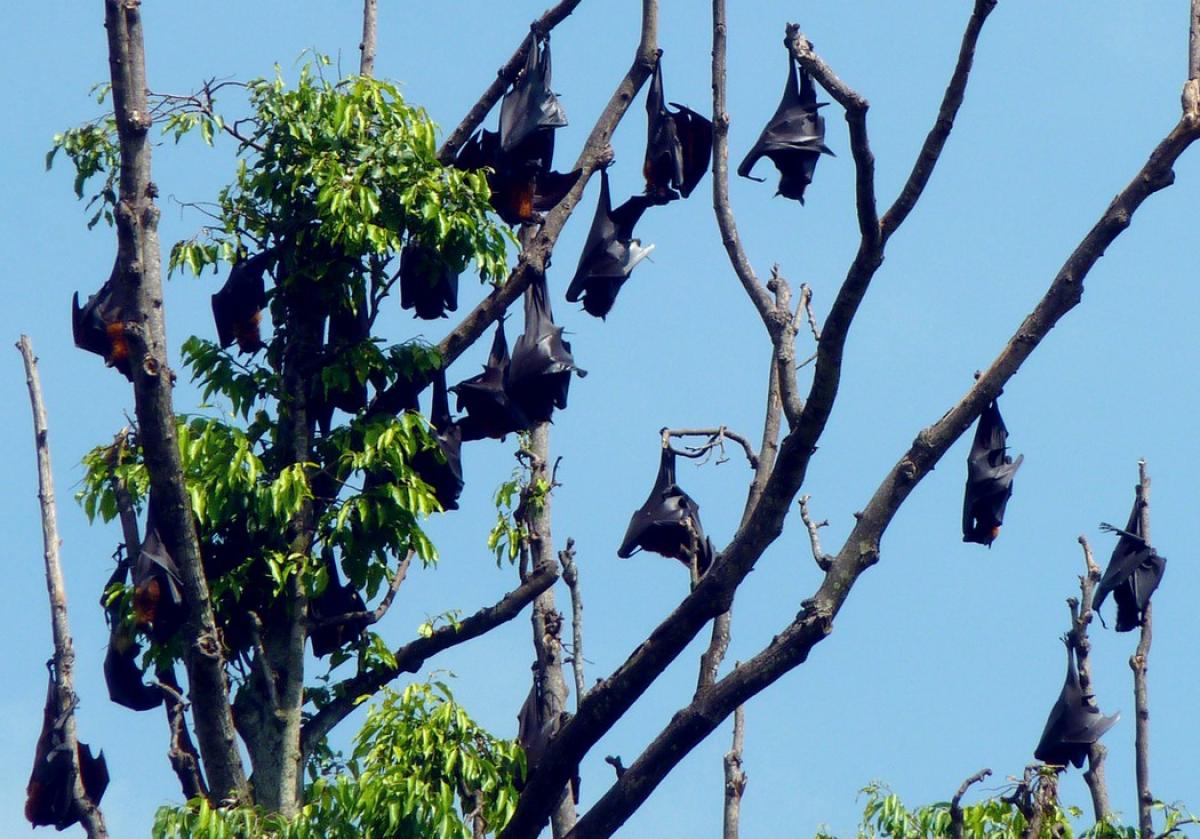
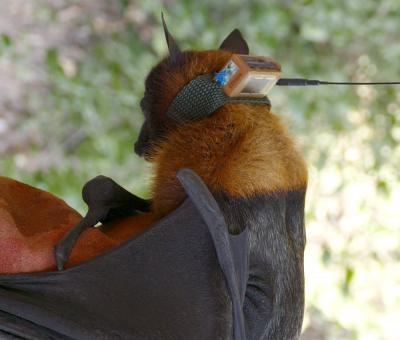
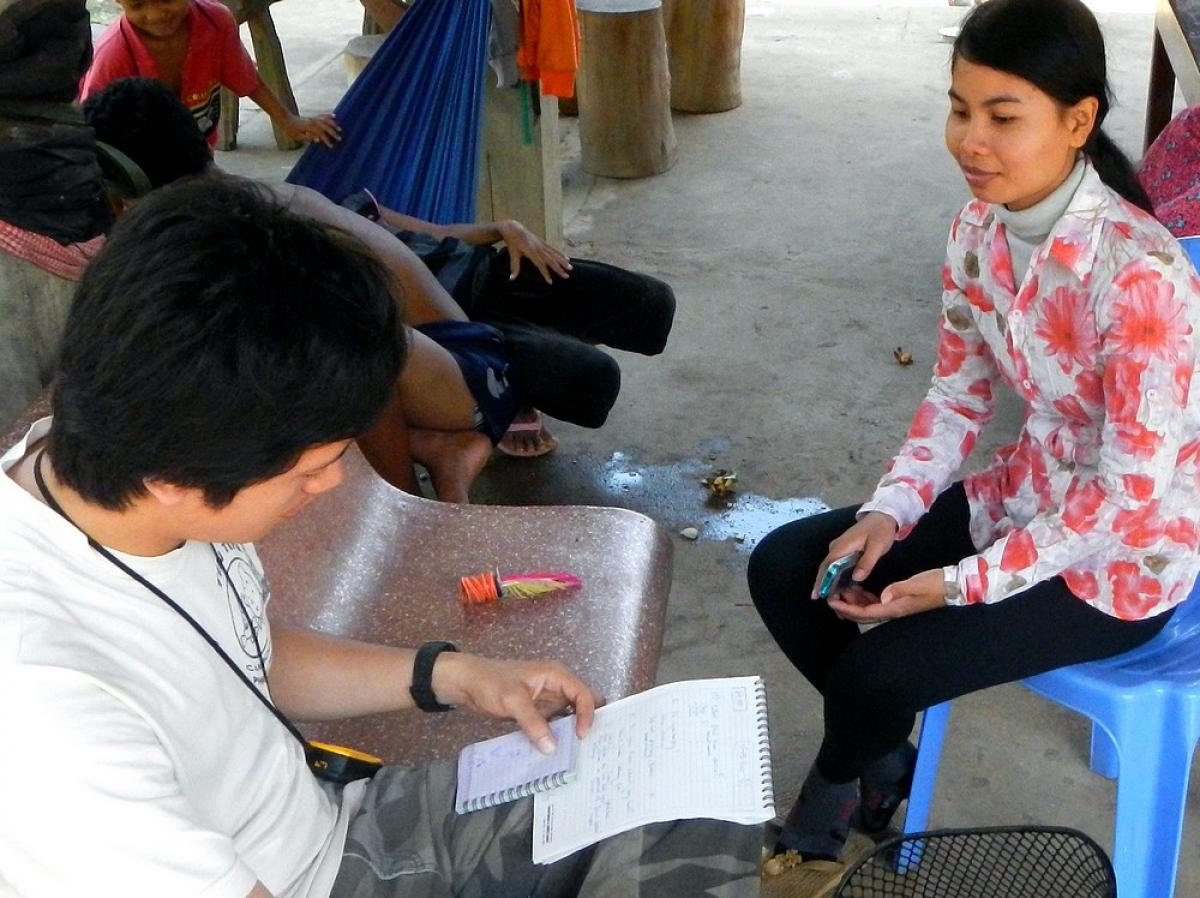

_C.Chabrier.JPG)
